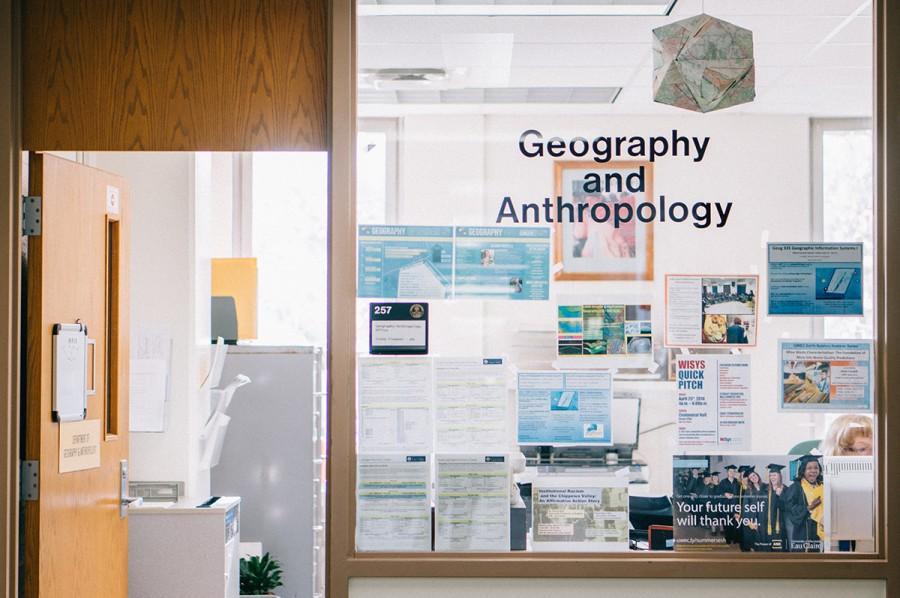New major in department of geography and anthropology
UW-Eau Claire will introduce geospatial analysis and technology degree in fall 2016
More stories from Angel Vang
Photo by Angel Vang
The department of geography and anthropology will expand students’ horizons and prepare them for future employment with the new geospatial analysis and technology degree.
After almost three years of tedious paperwork, the geospatial analysis and technology degree was finalized when the UW-System Board of Regents approved it April 9, Ryan Weichelt, associate professor of geography, said.
The process started with a grant called Growth Agenda Grant for Wisconsin Grants Program, which the department received from the state to support geospatial education, Weichelt said.
“We thought we could offer more than trying to wrap it into our traditional major,” Weichelt said about why the major was initiated.
The new major can teach students how to collect and analyze data using geospatial technologies, leading them to either GIS or remote sensing, Weichelt said.
GAT is one of the fastest growing job markets with employment opportunities for students, which makes students marketable after graduation, Weichelt said.
To determine the skills students need, the department worked closely with businesses in the region and across the country, Weichelt said.
“Because we know what businesses want already,” Weichelt said, “these skills give students a huge jumpstart when they enter the workforce.”
GAT will be more interdisciplinary than the traditional geography major and will require students to take classes outside of the department in business and computer science.
Paul Kaldjian, chair of the department of geography and anthropology, said they had been building toward this program before given the grant and before the university faced budget cuts.
“There’s so much interest and attention to this field within geography and across a wide variety of disciplines and needs inside and outside of Wisconsin,” he said. “We felt we had such a good start to having an exceptional undergraduate program.”
Student demand for the major is still evolving, Kaldjian said, because they don’t always know in high school they can attend college for geography. Students also don’t always know how powerful GAT is for an undergraduate institution, he said.
“When you look at the distribution of geography students, there may be just five or 10 freshmen majoring in geography, but we may have 30 or 40 of each (other year), so in that sense we are also a discovery major,” Kaldjian said.
The new major also provides students a different way of looking at the world, Kaldjian said. One aspect of geography is taking remotely sensed images from space shuttles and satellites. In GAT students study the land and compare what they see from above to what they experience on land.
“We look for patterns in the arrangements of events, phenomenons or practices and ask what the implications are for us,” Kaldjian said. “This new major will expand the set of tools we can use and responsibilities we need to take as we continue to learn about our world and how we should and can respond to the needs that we see around us.”


